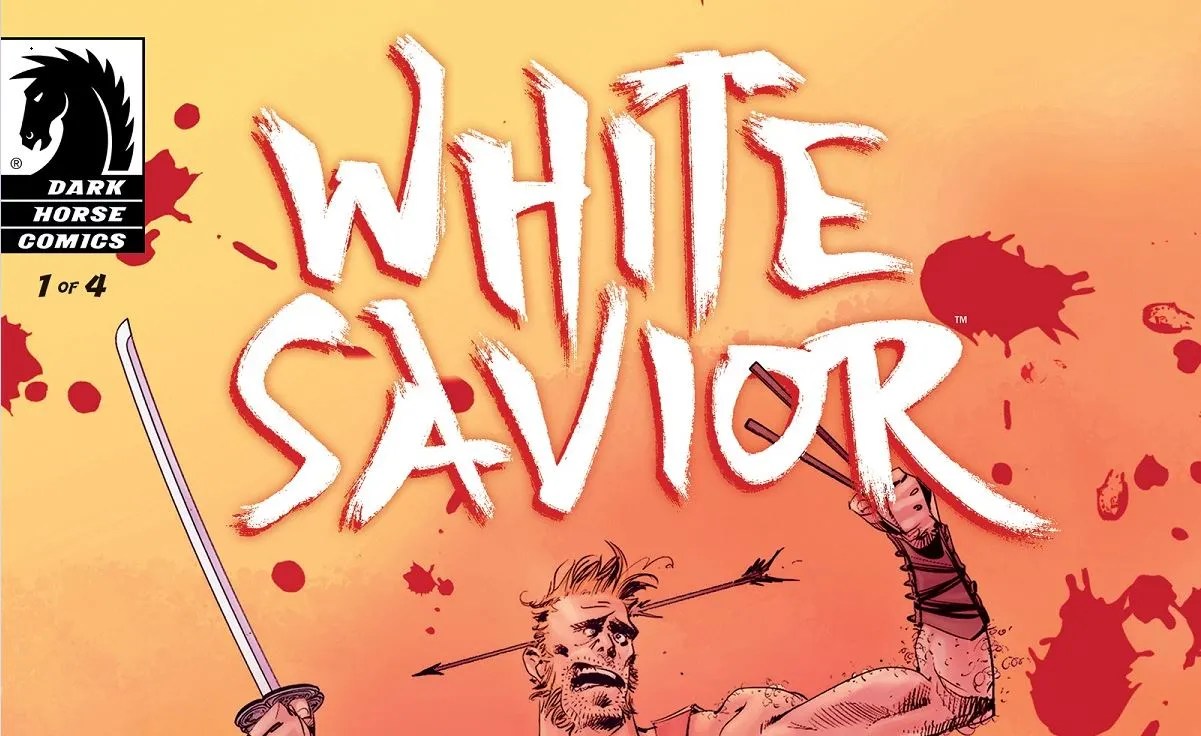REVIEW: ‘White Savior’ Subverts Tired Tropes With Humor and Wit

The term “white savior” has been thrown around a lot lately with the release of Avatar: The Way of Water, and some people might think this is just SJW jargon that doesn’t mean anything worthwhile, but the thing is that the concept of the “white savior” has been around for a very, very long time.
A white savior is a character (or sometimes, a real person trying to be a character) who ends up saving a group of people that are foreign to them, thus solving all their problems by their own white self. Notable examples include the aforementioned Avatar franchise, wherein a white marine saves a group of aliens who are very indigenous-coded; Kevin Costner’s character in Dances With Wolves; and most notably in this particular article’s context, Tom Cruise in The Last Samurai.
In The Last Samurai, Cruise is literally the last bastion of hope for a group of samurai who are caught in the conflict between the Meiji Emperor and the Tokugawa Shogunate. It’s an incredibly silly and ridiculous movie, because of the insinuation that without this guilt-ridden American who’s never held a sword before, the samurai would have never stood a chance.
While yes, there is a historical basis for the movie’s plot, the man that Cruise’s character was based on—Frenchman Jules Brunet—was nowhere near as much of a lynchpin for the samurai as the movie made him out to be. And for god’s sake, he did not go back to the village he’d been staying in to shack up with a Japanese widow whose husband he’d killed. Good grief, Tom Cruise.
The absurdity of this movie (and its mere existence) is the reason why Eric Nguyen’s graphic novel miniseries White Savior exists. Nguyen had been wanting to write a comedy for a while, and then a funny premise came to him: What if the “white savior” of a story ended up being the biggest dud in history? The sort of dud that didn’t save anyone, and instead spelled their doom with his utter clownery? And what if the savior had to be … wait for it … this might be hard to swallow … BAM, someone with the same ethnic background of the people he’s saving?
I know. Shocking. But White Savior is worth the shock.
Nguyen didn’t want the story to be heavy with social themes, as he wanted this to be more of a project of passion and fun. Thus, it ends up being sort of a perfect blend between a story that makes great social commentary all the same, and a story that doesn’t rely on said commentary to carry the plot. It’s a humorous, zany zig-zag, fairly short and delightfully salty.
The story follows Todd Parker, a film history professor who wants to make it very clear that he doesn’t know karate, he can’t magically heal people with his hands, and he’s terrible at math. He lives with his grandpa, who often likes to tell the story of the “White Savior of Inoki Village”: some American military man who charged headfirst into the enemy army, got arrowed, and caused certain destruction for the village at large. In White Savior, the eponymous White Savior is more of a cautionary tale than anything else. Like most grandkids, Todd just sort of “yes grandpa”s his way through the conversation and goes about his day.
But his day proves to be much more eventful than he anticipated. On his way to lunch with a friend, he intercepts a mugging that ends up being a ruse, leading to him getting mugged in return. His friend makes fun of him for even trying, since Todd’s got a fairly slim frame, but their conversation is interrupted when he sees the girl who mugged him serving as a waitress at their restaurant. When he chases her, he makes one wrong turn and ends up literally falling through time—right into an ancient battle between Kenzo Mitsuhide (the bad guy) and Yoshihiro Moromiri (the good guy).
By blundering around, Todd ends up saving Moromiri, and after passing out from mild wounds and severe bewilderment, he wakes up in none other than Inoki Village. And after a very patient and polite tour given by Moromiri, he’s introduced to none other than Nathan Garin: the White Savior of legend.
The first volume ends there, and I won’t spoil anything that happens in following volumes quite yet, but I’m certainly hooked! It’s a quick story that relies on quick humor, but it all works, and it does a good job of making you root for Todd from the get-go. The art style is similarly full of movement and action, and it’s clear that every panel is drawn with care and attention.
Overall, White Savior is such a fun, clever subversion of racist storytelling tropes, and I’m excited to read this story to its conclusion. You can find it wherever you get your comics, both digitally and in print. You can also get it straight from the source on Dark Horse’s website.
(featured image: Dark Horse)
Have a tip we should know? tips@themarysue.com